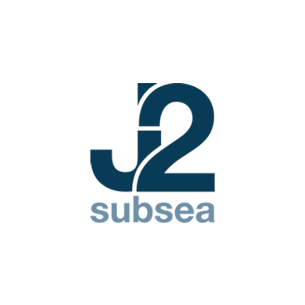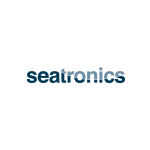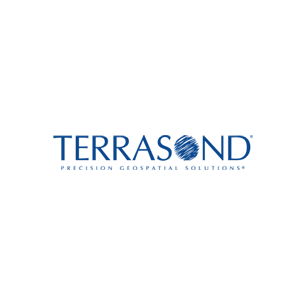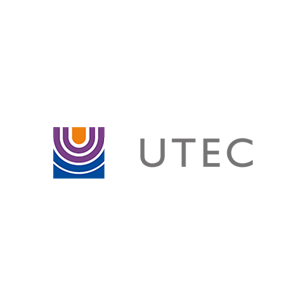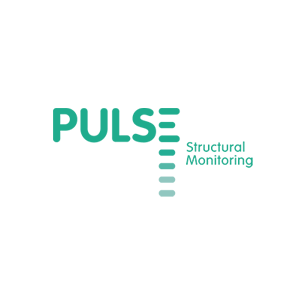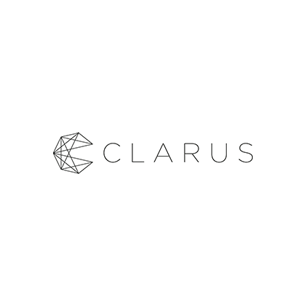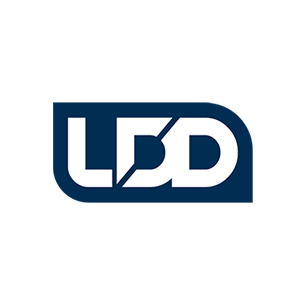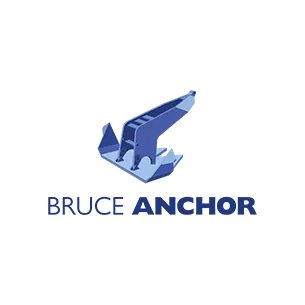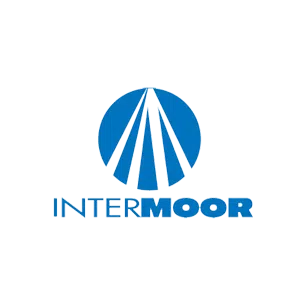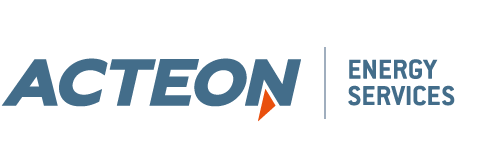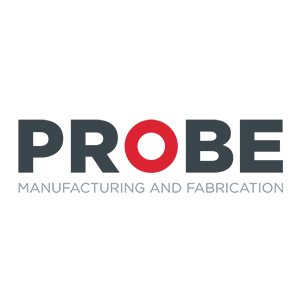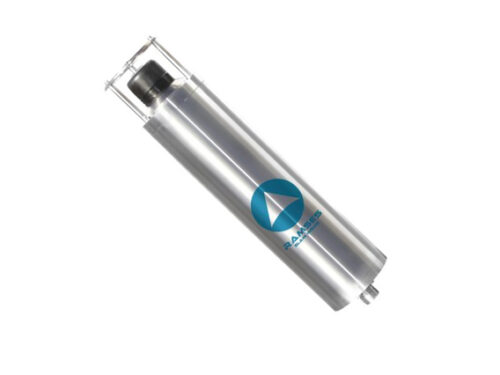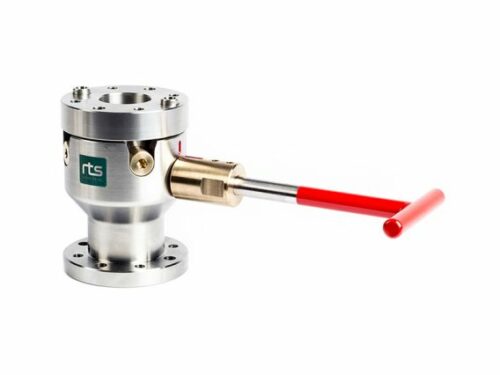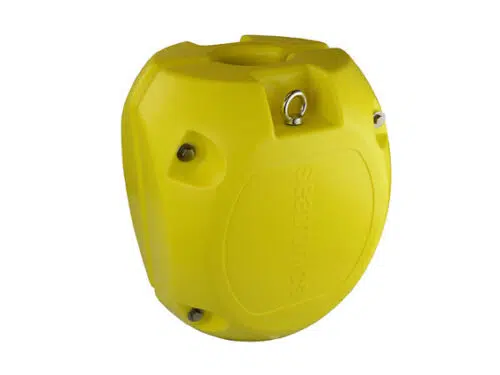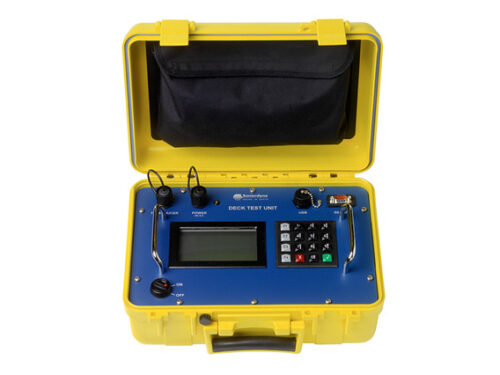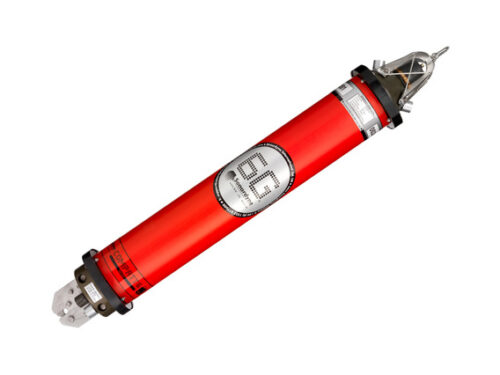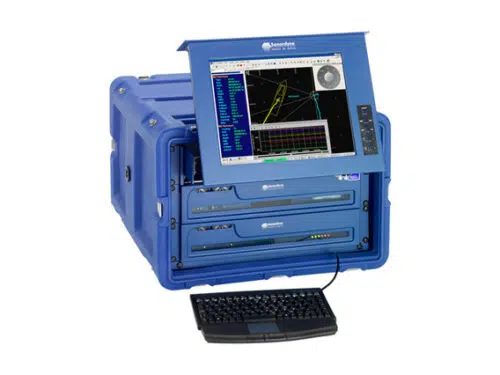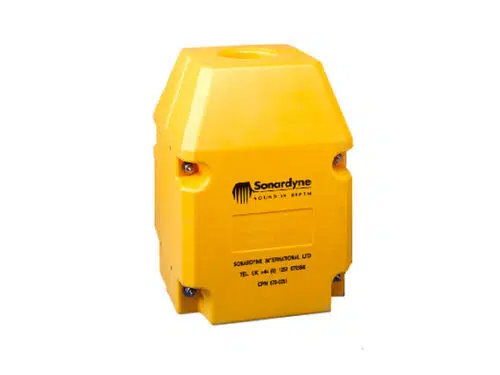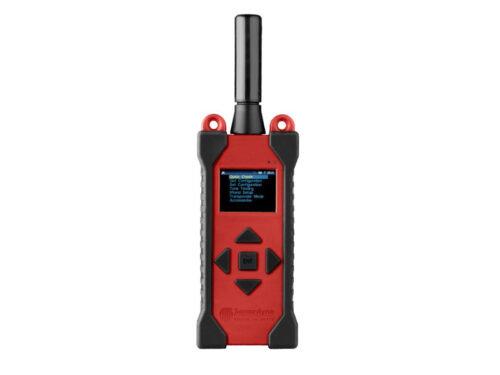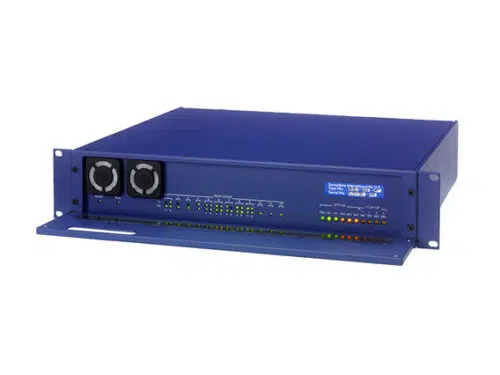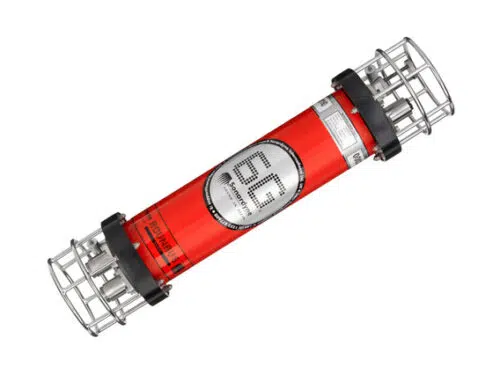Acteon Equipment sales & rental Electronics & Tooling PositioningLong Baseline (LBL)
Long Baseline (LBL)
Return to PositioningSearch products
X Products selected
RAMSES is an acoustic synthetic baseline positioning system with self-contained computing, for simple real-time sparse array subsea navigation.
Tightly coupled with iXBlue inertial navigation system (INS), it delivers extreme precision and robustness in challenging acoustic operational environment. Available in MF and LF versions (medium frequency for most applications and low frequency for ultra-long range applications), RAMSES is part of iXBlue inertial-acoustic solutions for underwater positioning and navigation. The solution combines RAMSES system with GAPS and POSIDONIA iXBlue ultra-short baseline (USBL) positioning systems.
- Sparse array positioning functionality and selfcalibration capability
- All in one self-contained system, including real-time position computation
- Decimeter range measurement accuracy
- Open solution environment: operates with iXBlue and third party transponders
High-precision Metrology Stab for subsea applications. The RTS MetSTAB Metrology Stab has been designed based on years of experience with different mechanical subsea interfacing solutions.
The unit features unrivaled mating precision and repeatability to ensure objects or subsea equipment is placed correctly in all axes. A special ROV- or diver-operable locking mechanism ensures vertical locking of the male stab during critical operation phases. To avoid cold welding during mating and locking, guide pins and locking shaft are manufactured in bronze. Guide pins are also replaceable and both male stab and female receptacle have been designed with mounting holes from both top and bottom to offer complete flexibility during unit placement.
- High Precision
- High Repeatability
- Locking Mechanism
- Bronze guide pins to avoid cold welding
- Replaceable guide pins
- Robust construction
The Type 8063 Deck Test Unit is a fully portable, splash proof transponder test unit, designed for the harsh environment of the back deck.
The DTU is capable of transmitting and receiving both Sonardyne Wideband™ and Tone acoustic signals in order to test all MF Compatt 5’s, DPT’s and WSM’s functionality.
- Test transponders acoustically including Wideband ranging
- Responder test capability
- Portable, rugged and splash-proof
- Continuous battery life of 8 hours with Lithium-Ion battery
- Universal mains-powered charger
- Display suitable for bright sunlight and low light conditions
- Electronic manuals available via USB connection to PC
- Firmware upgrades to test other instruments
It is the primary test equipment platform for Sonardyne and other acoustic instruments, both on deck and in the workshop.
Ranging, acoustic command function and the release mechanism can all be tested prior to deployment, using just the test transducer.
If a serial connection is made to the Compatt 5 or DPT, the DTU will extract all the transponder settings needed to be able to test the unit, simplifying the testing operation.
A WSM responder test capability exists when connected via a serial test lead to the transponder.
The DTU is battery powered and environmentally protected to IP65 and is therefore suitable for operation in most conditions.
The LCD display is designed for reading in sunlight and is back-lit for use in low-light conditions.
Its rechargeable Lithium-Ion battery lasts for at least eight hours of normal testing.
Initially programmed to perform acoustic and cable-connected tests on Compatt 5, DPT and WSM, the DTU firmware can be upgraded to cover other acoustic instruments and additional functionality.
An internal Flash memory card allows the DTU and transponder manuals to be read via USB connection to a PC.
The Compatt 6 transponder is fully compatible with all 6G® equipment and Sonardyne’s latest 6G® LBL and USBL systems.
Compatt 6 offers significant time saving using faster and more robust Sonardyne Wideband®2 acoustic ranging and telemetry protocols. This makes any system operating with Compatt 6 significantly easier to operate therefore de-risking operations, reducing vessel time and reducing training requirements for offshore personnel.
- Incorporates Sonardyne’s 6G® Technology
- MF frequency band utilising Sonardyne Wideband;reg;2 ranging and telemetry protocols
- Dramatically faster and easier to set-up, calibrate and operate
- More robust performance in shallow water and reverberant environments around structures etc
- Real time diagnostics available on ranges to enable quality control
- Reduced mutual interference to further improve simultaneous ops
- Advanced multi-user/multi-vessel capability
- More than 500 unique Sonardyne Wideband®1 and 2 addresses
- Sonardyne Wideband®1 and HPR400 navigation compatible
- Automatic power-down if not used for a programmable period
- Integrated modem mode with data rates ranging from 100 to 9000 bits per second in multiple frequency bands
- Highly reliable release mechanism
- Omni or directional transducer
- Standard sensors – temperature, pressure and MEMS inclinometer
- Optional sensors – Paroscientific DigiQuartz pressure sensor, inclinometer and sound velocity
- Field proven
Sonardyne Wideband®2 advanced signal processing offers improved acoustic performance in challenging conditions, longer range, improved multipath rejection around structures and real-time range diagnostics for quality control. Sonardyne Wideband®2 also reduces the interference to and from adjacent Sonardyne and other acoustic positioning systems.
Compatt 6 is fully compatible with all 6G® equipment and Sonardyne latest 6G® LBL and USBL systems.
The integrated communications and navigation technology allows the transponder to be used as a multi-purpose modem, autonomous data logger and navigation reference transponder.
The Type 8300 Compatt 6 is the standard length version and is based on the field proven mechanics of Compatt 5 with improvements to the end cap closure mechanisms. The design offers the perfect balance between size, acoustic output and battery life. Several depth ratings are available; 3000 m, 5000 m and 7000 m, all hard anodised aluminium alloy with protective polyurethane sleeve. Mini, Midi and Maxi (long endurance) options are also available.
The Data Fusion Engine is the heart of the system and is an integrated PC and navigation controller used to interface peripheral equipment such as GPS and attitude sensors, in addition to providing dedicated interface and power to transceivers.
This ‘one-box’ solution is designed to meet a complete onboard hardware requirement for any acoustic operation, thereby eliminating the need to install and set-up separate systems to provide for any acoustic positioning operation.
Fusion USBL Software Fusion USBL software is a Windows based package that is responsible for collecting, processing, displaying and recording acoustic and associated data.
Fusion USBL software offers flexibility and ease of operation to a whole host of offshore positioning scenarios.
Based on core acoustic principles and software modules Fusion USBL builds to provide a user interface that will guide the operator through set-up, calibration and into tracking.
All data is available both graphically and alpha numerically and is stored for later analysis and replay if required. Many tools are provided to assist in the optimisation of the system to operate in difficult environments.
Sonardyne’s range of subsurface floatation collars enable acoustic navigation and positioning transponders to be deployed, moored on the seabed and then recovered to the surface.
The floats are compatible with all Sonardyne’s latest generation Compatt 6 and DPT Wideband transponders as well as previous generation Mk 5 & 4 Compatts. They can be used with directional and omni-directional transducer types
- Manufactured from syntactic foam core encapsulated within a high visibility polyurethane elastomer coating
- Lifting eyelet inserts incorporated to ease transponder deployment and recovery
- Designed to stack, not roll, on the vessel deck
- Available in 1,000, 3,000, 5,000 and 7,000 metre depth ratings
- Provides reliable long term deployment and recovery of
- Sonardyne Compatt 6 , compat 5 and DPT transponders when fitted with directional transducers
- Unique hydrodynamic shape provides fast, stable ascent to the surface
Manufactured from high performance materials appropriate to the required depth rating, each float assembly comes in two halves and is clamped around the transponder using stainless steel fixings.
Bright colours ensure good visibility, either when subsea and viewed from an ROV’s camera or when floating on the surface prior to recovery.
Once on the surface, the floatation collar is designed so that the transponder floats in a downward position insuring that the acoustic transducer is kept submerged. This can assist with relocating the transponder using a vessel-based acoustic positioning system and also protects the acoustic transducer during recovery back onboard.
Type 5807 is a 5,000 metre depth rated floatation collar designed specifically for use with Sonardyne’s range of Directional Compatt 5 and DPT acoustic transponders. It has improved hydro-dynamic properties, permitting a 50% faster speed of ascent then earlier models, saving vessel time.
The unique shape of the Type 5807 floatation collar allows a transponder to be installed such that the unit is acoustically shielded from localised noise interference and also afforded increased protection from accidental physical damage whilst deployed.
The iWand is a hand held acoustic transponder test and configuration device developed for use with Sonardyne’s 6G® product range.
Being small, rugged and splash proof means the iWand is ideal for setting up equipment in the workshop, on the back deck of a ship, or on ROVs and subsea structures before they are deployed. The simple to use interface and sunlight readable display makes it easy to test, gather and download configurations.
- Perfect for the workshop or on the back deck
- Works with all 6G transponders
- Use to acoustically test and configure instruments
- Splash-proof, rugged and portable design
- Speeds up pre-deployment checks
Communication to a transponder is via the acoustic ‘Wand’ which is held against the transponder’s acoustic transducer. This tests the acoustic transmission and reception functions of the transponder ensuring they are operating correctly.
The iWand is used in conjunction with the 6G configuration software running on a standard PC. It enables all 6G (excluding WSM6, which can only be acoustically tested) transponders to be easily configured. The configuration of the various transponders can then be exported to a document as an audit trail, or to a file that can be imported into Sonardyne positioning system navigation software.
The iWand has various PC connection options; Bluetooth, USB or Serial. The USB is used to recharge the internal battery.
The internal GPS receiver provides UTC time tagging of communication to transponders and PC and can also be used to synchronise multiple transponders to UTC for logging applications.
The Type 8020 Navigation Controller Unit (NCU) forms part of a Data Fusion Engine, a ‘one-box’ solution designed to meet the complete on-board requirements of any acoustic operation.
The NCU is the interface between the in-water acoustic instruments, sensors and the Navigation Computer which runs the acoustics positioning software. In addition to accurately time stamping incoming data from external devices such as GPS, the NCU also provides power and communications for ship-borne acoustic transceivers.
- Interfaces all sensors and acoustic transceivers
- Accurate time stamping for next generation tracking methods
- Houses sensor specific interfaces
- Provides power and communications to acoustic transceivers
- Configurable for dual and triple redundancy
A range of hardware interface cards are available for interfacing Sonardyne transceivers and external sensors. By simply plugging these cards into the rear of the unit, the role of the Navigation Controller Unit can be transformed from supporting simple to complex acoustic operations.
For certain DP and drilling operations, the NCU can be configured to offer dual and triple redundancy.
ROVNav 6 is a 6G® Wideband®2 ranging and telemetry Long BaseLine (LBL) and telemetry transceiver specifically designed for installation on work class ROVs.
- Incorporates Sonardyne’s 6G® Technology
- Incorporates Sonardyne’s Wideband®2 signal Technology
- High power, long range LBL transceiver
- MF frequency band utilising Sonardyne
- Wideband®2 ranging and telemetry protocols
- More robust performance in shallow water and reverberant environments around structures etc.
- Real-time diagnostics available on ranges to enable quality control
- USBL compatible responder with emergency transponder mode (Li-ion battery)
- Rugged mechanics and connectors
- Integrated modem capability for data download from Sonardyne AMT/Fetch products at data rates from 100 to 9000 bits per second
- Standard sensors – temperature, pressure, sound velocity and MEMS inclinometer
- 3,000 or 5,000 metre depth rated; 7,000 metre on request
- Field proven
Its high power output and Sonardyne Wideband®2 signal processing offers improved range and acoustic performance in challenging conditions such as on noisy vehicles or in multipath environments.
ROVNav 6 is also a fully compatible USBL responder or transponder compatible with Sonardyne Wideband® 1 and 2 USBL systems and HPR400. The internal Li-ion rechargeable battery pack also enables emergency transponder mode, so if the umbilical and therefore power is cut to the ROV it can still be located by USBL.
The rugged Omni-directional remote MF transducer makes installation on a ROV easy. ROVNav 6 is designed to be rugged though relatively lightweight and utilises robust underwater connectors. ROVNav 6 supports a range of internal sensors including: strain gauge pressure, direct reading sound velocity, PRT temperature and MEMS based inclinometer.
ROVNav 6 is fully compatible with Sonardyne’s modem and logging equipment such as AMT and Fetch products, allowing it to be used to retrieve data or configure logging regimes. It supports all of Sonardyne’s Wideband®2 spread spectrum acoustic communication; 100 to 9000 bps user data rates can be selected depending on the environment.
Sensor options include a Digiquartz pressure sensor, precision inclinometer and altimeter interface. This provides a fully featured ROV manipulator deployable tool/sensor pack for a range of different applications including metrology, bathy survey and structure deployment operations, without the requirement for any additional interfacing on the ROV.

